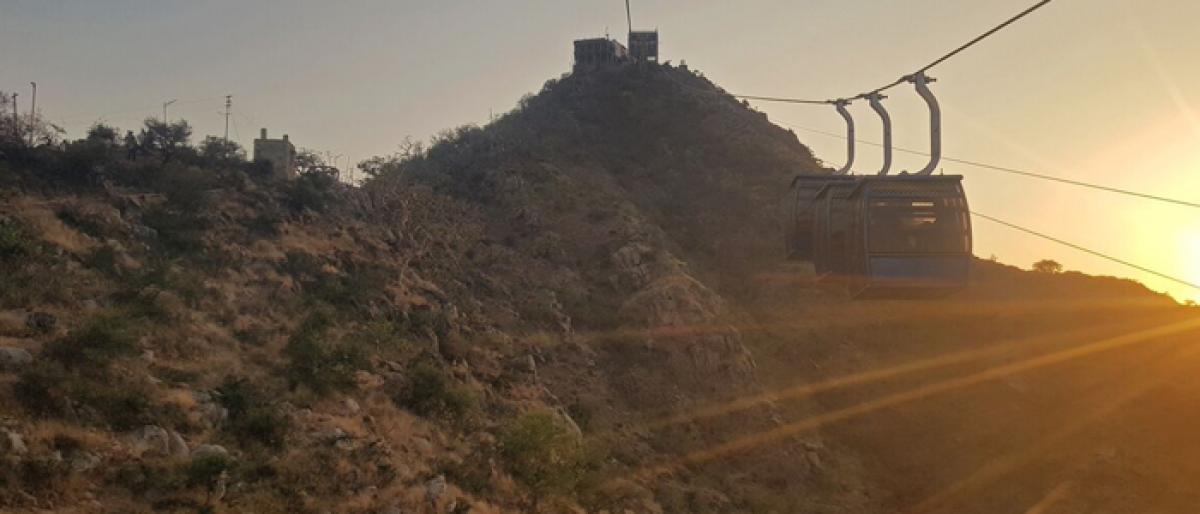Live
- Gurgaon Open: M Dharma fires 67 for two-shot lead on penultimate day
- Sharad Pawar made many attempts to finish Shiv Sena, claims Maha minister
- Former England opener Raman Subba Row dies aged 92
- IPL 2024: Impact player rule is affecting the progress of half all-rounders, says Zaheer Khan
- ‘Teppa samudram’ review: Entertains with twists and turns
- ‘Market Mahalakshmi’ review: Blends humour and heartfelt moments
- SC reserves verdict on pleas seeking mandatory EVM-VVPAT tally
- Actress Ananya Nagalla Launches Advanced Gro hair and Glo skin Clinic at Banjara Hills
- LS poll battle: Only 9.83 pc candidates are women in NE states
- MahaYuti will win 45 plus LS seats in Maharashtra
Just In

Tirth Raj. The king of all holy places. Though the state of Rajasthan is in itself, hands down the most popular destination in India for both International and domestic tourists, Pushkar stands alone in the kind of charm that it exudes.
Tirth Raj. The king of all holy places. Though the state of Rajasthan is in itself, hands down the most popular destination in India for both International and domestic tourists, Pushkar stands alone in the kind of charm that it exudes. Though a hugely popular destination for the backpacker and the photographer alike, it does not dispel its solemn temple town vibe.
Earthy in a way that isolates it from other popular cities across the state that are peppered with magnificent forts and palaces, it is but a tiny town of mythological legends. Separated from Ajmer by the Nag Pahad or Snake Mountain and surrounded by the Aravallis, Pushkar is secluded from the rest of Rajasthan even geographically.
There is but one main street which leads to everywhere in town and doubles up as the bazaar that tourists flock to all day in between visits to the various temples and ghats. The ghats abutting the Pushkar Lake are yet another hub of activity. They are the heart and soul of Pushkar and you can see the town rising in arches and domes, of temples both olden and new.
While there are numerous temples in Pushkar both abutting the ghats and elsewhere, here are the most prominent ones.
Bramha Temple
Made of marble and silver coins, this temple dedicated to the creator of the universe is Pushkar’s biggest draw. Cursed by the god’s wife, Savitri Devi, for taking another wife, a local tribal girl, Gayatri, Pushkar is the only place in the country where Brahma is worshipped. Along with his consorts, the two goddess who each have a temple of their own atop hills on opposite sides. A marble statue of the sun god, Surya, in warrior boots, stands sentinel here.
Savitri Temple
Located at the summit of the Ratnagiri Hill, this temple dedicated to Goddess Savitri, Lord Brahma’s first wife, can be reached by a short cable car ride. While the ropeway climbing up the valley sings through vistas of lush green, the hill top itself offers a bird’s eye view of the holy Pushkar lake and the town encircling it, complete with the fair grounds and the makeshift tent city that come up during the Pushkar Mela. One can also take the steep flight of steps to get here, but it is a difficult climb and takes anywhere upwards of an hour.
Gayatri Temple
Atop the opposite hill is the Paap Mochani Temple or the Gayatri Temple, dedicated to Lord Brahma’s second wife, the Goddess Gayatri. A darshan of this powerful goddess, manifested here as the Ekadashi Mata, is said to absolve one of all sins or paap, hence the name Paap Mochani. The thirty-minute trek that brings you here, is well worth the effort for another reason too. For here is the town’s best sunrise point, offering beautiful views of sun rising on the golden sand dunes of Pushkar.
Purana Rangji Mandir
South meets North at this 175-year-old temple on the Varaha Ghat of the Pushkar Lake. And not just in its architecture but in its people and customs. The Purana Rangji Mandir with its typically Rajasthani facade is actually a South Indian Vaishnava Temple, complete with the Shanku - Chakram, Dwaja Stambham and the intricate South Indian Gopuram. The main deity of the temple who is Lord Krishna, is known as Venugopal in South India and is manifest as Ranganatha Swamy in Srirangam, Tamil Nadu, and it is he who gives this temple its name.
A fascinating city even otherwise, come November, this mythical town turns into a rowdy riot of colours and hustle-bustle. For it is the time of the annual Camel Fair. A week-long affair that culminates with the full moon on Kartika Purnima, it is more than just one of the largest and the most famous livestock markets. It is a social and cultural gathering. From the camel races and the folk music and dance to the matka phod competition where the visiting foreigners compete with the local ladies to race with an earthen pot of water, only to break it at the finish line, this earnest pilgrimage centre dons an air of festivity and fun.
Fact File: Pushkar is 11 kilometres from Ajmer and 165 kilometres from Jaipur, which is the nearest airport. One can also drive down to Pushkar from Jodhpur which is 185 kilometres. The State Government run RTDC Hotel Sarovar, also known as Man Mahal is a good place to stay and was once the guest house for Raja Man Singh I.

© 2024 Hyderabad Media House Limited/The Hans India. All rights reserved. Powered by hocalwire.com







